USDA researchers test biomass pyrolisis plant for the production of bio-oil
 Scientists from the USDA's Agricultural Research Service (ARS) have started experimenting with a thermochemical bioconversion technology that will convert biomass crops such as switchgrass and lignocellulosic energy crops into a liquid intermediate called 'bio-oil' or 'pyrolysis oil' that can be refined further into a range of automotive and industrial fuels. The test bed is a 2.5 kg/hr fluidized-bed reactor that converts biomass via a process called fast pyrolysis. The researchers published their results in the journal Industrial and Engineering Chemistry Research.
Scientists from the USDA's Agricultural Research Service (ARS) have started experimenting with a thermochemical bioconversion technology that will convert biomass crops such as switchgrass and lignocellulosic energy crops into a liquid intermediate called 'bio-oil' or 'pyrolysis oil' that can be refined further into a range of automotive and industrial fuels. The test bed is a 2.5 kg/hr fluidized-bed reactor that converts biomass via a process called fast pyrolysis. The researchers published their results in the journal Industrial and Engineering Chemistry Research.Overcoming logistical challenges
A major motivation for the research is to overcome some of the logistical challenges associated with biomass fuels. The challenge of using ligno-cellulosic energy crops is to overcome their low density. Bales of for example switchgrass are light and very bulky and require too much space on trucks or rail to make transportation to a central processing facility economically feasible. The idea is to transform them into bio-oil on-site, near the plantation, after which the energy rich, high density liquid can be transported more efficiently to central refineries.
Other challenges are difficulties associated with breaking down the complex carbohydrates in switchgrass to make simple sugars that can be converted into ethanol through the process of fermentation. These difficulties result in the current estimate that ethanol from switchgrass costs about twice as much as ethanol from grain crops, such as corn.
But according to the ARS researchers, pyrolysis offers a way to overcome both problems at once. By heating the biomass in an absence of oxygen - called pyrolysis - the green feedstock is broken down efficiently into a liquid that can be easily transshipped to central refineries and upgraded to fuels and chemicals.
In order to test the concept, they built a unique pilot-scale reactor that uses a hot sand medium (called a fluidized-bed reactor) to convert perennial grasses to bio-oil and have now tested the reactor on switchgrass. They obtained the following results:
- The reactor was able to use switchgrass as a feedstock and produce a quantity of bio-oil that was 60% of the weight of the switchgrass fed into the reactor.
- They analysed the composition and fuel properties of the produced liquid and found that the energy content was about the same as the parent switchgrass but the density was more than 2.5 times greater.
- The results show that char yielded would suffice in providing all the energy required for the endothermic pyrolysis reaction process.
- The tests showed over-all energy conversion efficiencies ranging from 52 to 81%.
Decentralised production
In the larger order of things, the technology is exceptionally suited for the developing world, where biomass productivity potentials are high, but where infrastructures are underdeveloped. In principle, the technology allows for decentralised 'crude oil' production by small producers, who sell to refineries (earlier post).
The ARS researchers hint at this concept:
 bioenergy :: biofuels :: energy :: sustainability :: energy crops :: biomass :: lignocellulosic ::fast pyrolisis :: biomass-to-liquids :: bio-oil :: decentralisation ::
bioenergy :: biofuels :: energy :: sustainability :: energy crops :: biomass :: lignocellulosic ::fast pyrolisis :: biomass-to-liquids :: bio-oil :: decentralisation ::the study provides useful information for companies interested in building small scale distributed pyrolysers that could be used by farmers "on the farm" to produce a pyrolytic oil. Farmers could then sell the product as a "crude oil" to oil refiners, who in turn, would convert it into transportation or heating fuels. If successful, this would lead to increased opportunities for farmers who could put marginal lands into [tropical grass] production and help drive a renewable fuels economy in rural [areas].The study includes mass and energy balances of this system, yielding useful parameters for future economic and design studies.
More information:
Boateng, A.A., Daugaard, D.E., Goldberg, N.M., Hicks, K.B. 2007. Bench-scale fluidized-bed pyrolysis of switchgrass for bio oil production. Industrial and Engineering Chemistry Research 46, p.1891-1897.
Article continues
 --------------
--------------
 Taiwan's Feng Chia University has succeeded in boosting the production of hydrogen from biomass to 15 liters per hour, one of the world's highest biohydrogen production rates, a researcher at the university said Friday. The research team managed to produce hydrogen and carbon dioxide (which can be captured and stored) from the fermentation of different strains of anaerobes in a sugar cane-based liquefied mixture. The highest yield was obtained by the Clostridium bacterium.
Taiwan's Feng Chia University has succeeded in boosting the production of hydrogen from biomass to 15 liters per hour, one of the world's highest biohydrogen production rates, a researcher at the university said Friday. The research team managed to produce hydrogen and carbon dioxide (which can be captured and stored) from the fermentation of different strains of anaerobes in a sugar cane-based liquefied mixture. The highest yield was obtained by the Clostridium bacterium.

 As is well established by now, biofuels may offer major advantages to developing countries. These countries can 'leapfrog' into a greener world that is based on a new energy and development paradigm. Biofuels bring a reduction of dependence on oil and the high fossil fuel prices that are so detrimental to their economies, they offer increased energy security through fuel diversification, income generation for farmers and rural communities, new jobs in a wide range of sectors, decreased air pollution and greenhouse gas emissions, a democratisation of access to mobility and increased energy access - in short, a virtuous cycle of factors that leads to a strengthened economy, both on the macro- as on the micro-level.
As is well established by now, biofuels may offer major advantages to developing countries. These countries can 'leapfrog' into a greener world that is based on a new energy and development paradigm. Biofuels bring a reduction of dependence on oil and the high fossil fuel prices that are so detrimental to their economies, they offer increased energy security through fuel diversification, income generation for farmers and rural communities, new jobs in a wide range of sectors, decreased air pollution and greenhouse gas emissions, a democratisation of access to mobility and increased energy access - in short, a virtuous cycle of factors that leads to a strengthened economy, both on the macro- as on the micro-level.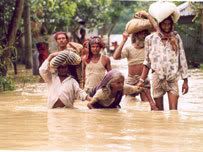 Earlier this year, Working Group I of the
Earlier this year, Working Group I of the 





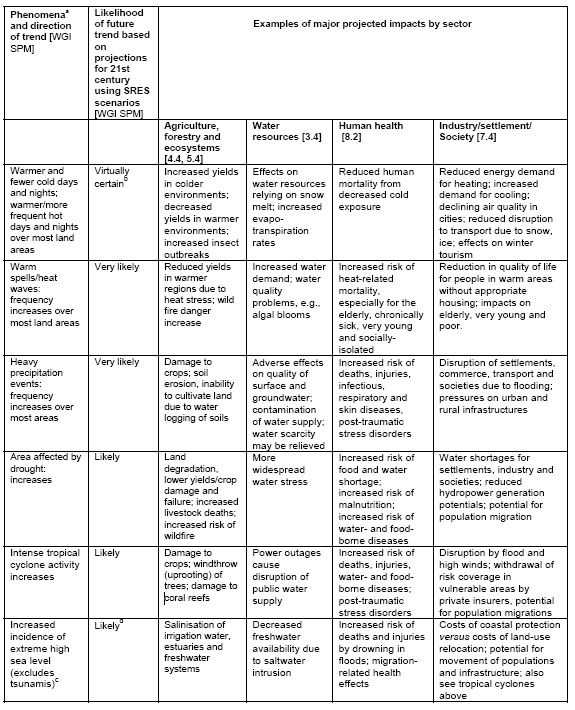

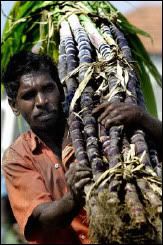 The Chief Minister of India's Andhra Pradesh state, Dr. YSR Reddy, formally
The Chief Minister of India's Andhra Pradesh state, Dr. YSR Reddy, formally 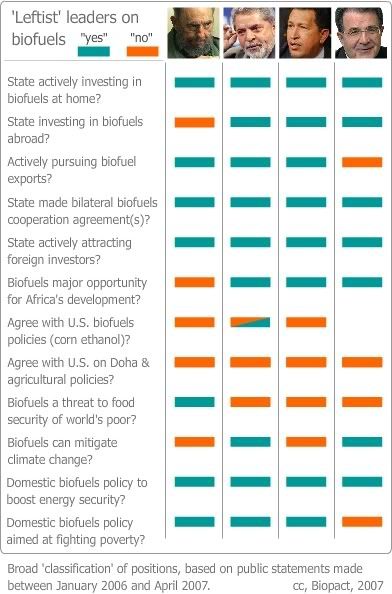
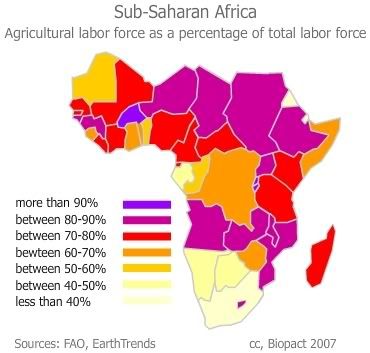

 Calling biofuels a "“transformative opportunity" for Latin America and the Caribbean, Inter American Development Bank President Luis Alberto Moreno
Calling biofuels a "“transformative opportunity" for Latin America and the Caribbean, Inter American Development Bank President Luis Alberto Moreno 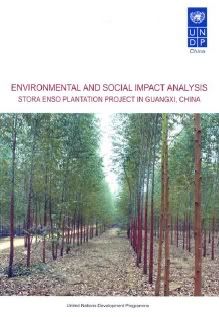 Our bioenergy future will rely on large-scale energy farming. Many of the projects will be located in the Global South where they are set to have both positive, negative and ambiguous impacts on the environment as well as on the socio-economic fabric of the communities that host them.
Our bioenergy future will rely on large-scale energy farming. Many of the projects will be located in the Global South where they are set to have both positive, negative and ambiguous impacts on the environment as well as on the socio-economic fabric of the communities that host them. Stora Enso plantation work presents an opportunity near to home for those locals that do not wish to outmigrate, though may not offer as many months per year of work as out-migration. Across survey groups, results indicate that respondents are not dissatisfied with their working conditions as compared to the alternatives, but nor do they believe their working conditions are particularly good compared to other options.
Stora Enso plantation work presents an opportunity near to home for those locals that do not wish to outmigrate, though may not offer as many months per year of work as out-migration. Across survey groups, results indicate that respondents are not dissatisfied with their working conditions as compared to the alternatives, but nor do they believe their working conditions are particularly good compared to other options.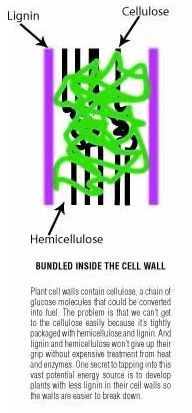
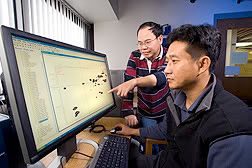 John Ralph, a DFRC chemist, is one of the scientists who have been focusing on lignin's structural details. With the help of nuclear magnetic resonance (NMR), a technology that takes advantage of the magnetic fields surrounding atoms, Ralph and colleagues have been able to chip away at lignin’s mysteries, including how plants make it. Many of Ralph’s insights have come from years of scrutinizing the lignin structures in transgenic plants. He says there’s much to be learned about a gene by watching what happens when it’s altered.
John Ralph, a DFRC chemist, is one of the scientists who have been focusing on lignin's structural details. With the help of nuclear magnetic resonance (NMR), a technology that takes advantage of the magnetic fields surrounding atoms, Ralph and colleagues have been able to chip away at lignin’s mysteries, including how plants make it. Many of Ralph’s insights have come from years of scrutinizing the lignin structures in transgenic plants. He says there’s much to be learned about a gene by watching what happens when it’s altered.

 In his series of essays titled
In his series of essays titled  As part of a €100 million investment program aimed at boosting innovation in the Netherlands, the ambitious research project CATCHBIO has
As part of a €100 million investment program aimed at boosting innovation in the Netherlands, the ambitious research project CATCHBIO has  A major advantage of biofuels is that they can be made from a wide variety of biomass feedstocks, including agro-industrial waste-streams. German dairy products group
A major advantage of biofuels is that they can be made from a wide variety of biomass feedstocks, including agro-industrial waste-streams. German dairy products group 
 At the Biopact, we are critical of biofuel companies who claim they can produce huge amounts of liquid fuels from algae. Often, these claims are mere marketing stunts and not based on any credible science (
At the Biopact, we are critical of biofuel companies who claim they can produce huge amounts of liquid fuels from algae. Often, these claims are mere marketing stunts and not based on any credible science ( The Singapore based Centre for Management Technology (CMT) is organising a two-day
The Singapore based Centre for Management Technology (CMT) is organising a two-day 


 An interesting large-scale bioenergy project aimed at reducing extreme rural poverty and environmental degradation is underway in Namibia. Vast tracts of the country's scarce farmland have become uncultivable because of encroachment by hardy shrubs and trees, generically known as 'invader bush'. Studies indicate that not less than 26 million hectares of agricultural land are infested, which is preventing the growth of useful grass species and which results in the compaction of soils in the bush encroached areas. The disastrous plague has reduced the land's carrying capacity resulting in reduced cattle numbers over the years and leading to economic losses of N$700 million (€72/US$96.1 million) every year. Small farmers suffer under the plague which fuels rural poverty (even though agriculture contributes less than 5% to Namibia's GDP, over 70% of the country's population is dependent on the sector).
An interesting large-scale bioenergy project aimed at reducing extreme rural poverty and environmental degradation is underway in Namibia. Vast tracts of the country's scarce farmland have become uncultivable because of encroachment by hardy shrubs and trees, generically known as 'invader bush'. Studies indicate that not less than 26 million hectares of agricultural land are infested, which is preventing the growth of useful grass species and which results in the compaction of soils in the bush encroached areas. The disastrous plague has reduced the land's carrying capacity resulting in reduced cattle numbers over the years and leading to economic losses of N$700 million (€72/US$96.1 million) every year. Small farmers suffer under the plague which fuels rural poverty (even though agriculture contributes less than 5% to Namibia's GDP, over 70% of the country's population is dependent on the sector).
 Dartmouth College Engineering Professor and Mascoma co-founder Lee Lynd is honored for 25 years of inventive achievements and research into biofuels. He
Dartmouth College Engineering Professor and Mascoma co-founder Lee Lynd is honored for 25 years of inventive achievements and research into biofuels. He  A very interesting development is underway in West-Africa. In order to tap the rapidly growing global market for biomass and to strengthen local energy security, West-African countries are launching the 'African Miscanthus Plantations' project or
A very interesting development is underway in West-Africa. In order to tap the rapidly growing global market for biomass and to strengthen local energy security, West-African countries are launching the 'African Miscanthus Plantations' project or  Some major news just in from Germany, where biogas has become the fastest growing renewable energy segment. Researchers at the
Some major news just in from Germany, where biogas has become the fastest growing renewable energy segment. Researchers at the 
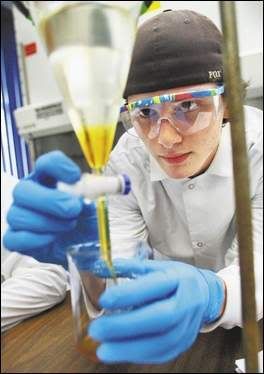 The nascent biofuels sector is not only reviving the rural economy across the world, bringing new opportunities to farmers, it is also resulting in a large number of new jobs for laboratory workers, engineers, researchers, and trained employees. An illustration comes from Iowa, the center of the U.S. biofuels industry.
The nascent biofuels sector is not only reviving the rural economy across the world, bringing new opportunities to farmers, it is also resulting in a large number of new jobs for laboratory workers, engineers, researchers, and trained employees. An illustration comes from Iowa, the center of the U.S. biofuels industry.






Saturday, April 07, 2007
The global biofuels revolution: challenges, options, recommendations
The report was recently presented and discussed at a conference, where both the IDB and the Interamerican Ethanol Commission convened. The following videos highlight contributions of two speakers: Roberto Rodrigues (former Brazilian minister of agriculture) and David Rothkopf who prepared the study.
Rothkopf discusses the confluence of major factors that make the case for biofuels: instable and insecure oil markets, the evidence for climate change and the need for low carbon fuels, the biotech revolution, and rapid growth in the developing world. Green fuels offer opportunities to create an entirely new energy paradigm that confronts this situation. Key words are decentralisation, fuel diversification, sustainability and social inclusion.
However, many challenges remain, such as the need to develop new technologies, investments in infrastructures and the creation of global and regional biofuel policies and markets. The speaker further focuses on current trends and the potential of Latin America.
Roberto Rodrigues, current co-chair of the Interamerican Ethanol Commission, former agriculture minister under Brazilian president Lula's first government, and professor of 'world economics' at the University of São Paulo. Rodrigues explains why the big issue for 20th century agriculture was achieving global food security, and why for the 21st century it will be energy security. The professor sees a radical change in the geography of energy and agriculture, with the Global South taking advantage of its vast bioenergy potential to leapfrog into a green development era. Rodrigues continues by focusing on the food versus fuel issue as it relates to Brazil. He concludes with a discussion of technological progress in the sector.
More information:
IDB: "IDB targets $3 billion in Private Sector Biofuel Projects" - April 2, 2007.
IDB presentation of the study "A Blueprint for Green Energy in the Americas - Strategic Analysis of Opportunities for Brazil and the Hemisphere", April 2007.
Video fragment credits: IDB, C-Span [entry ends here]
Article continues
posted by Biopact team at 8:54 PM 0 comments links to this post
